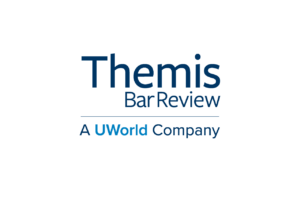If You Do Work Internationally, You'll Want to Know About the New EU Standards Coming Friday
Can an international deal fall through because electronic signatures were used?
 I’ve written about electronic signatures in the past and I strongly believe that they are the future. There’s a reason UPS delivery people don’t carry around clipboards with carbon copy delivery slips for us to sign any more. There’s a reason that when you pay with your credit card at the grocery store or at Target, you sign on a keypad reader and not on a paper receipt. It’s simply a better way to do things from a convenience and efficiency standpoint.
I’ve written about electronic signatures in the past and I strongly believe that they are the future. There’s a reason UPS delivery people don’t carry around clipboards with carbon copy delivery slips for us to sign any more. There’s a reason that when you pay with your credit card at the grocery store or at Target, you sign on a keypad reader and not on a paper receipt. It’s simply a better way to do things from a convenience and efficiency standpoint.
One of the biggest problems with electronic signatures is that for them to be effective, they need to be both 1) legal in your jurisdiction and 2) agreed to by the parties. Regarding that last point, some jurisdictions have laws that an electronic signature cannot be denied effect just because it is not in wet ink, so you don’t always need a stipulation to use electronic signatures, but in general, the process goes much smoother if one side does not dispute the validity of the concept of electronic signatures.
So, let’s say your firm in New York has clients that do business in Minnesota and both New York and Minnesota have specific state statutes that allow for electronic signatures and both are covered under the US Electronics Signatures Act. But, what happens when your firm in New York has a client digitally sign a declaration or you digitally sign a pleading and try to use it in a case in Italy?

Law Firms Now Have A Choice In Their Document Comparison Software
The Problem
In general, people are wary about things they don’t understand. People understand pens. Hundreds of years ago, people understood wax seals. Today, we are in the transitional phase of understanding electronic and digital signatures. That’s why we even need to have a set of laws telling us that we can or cannot sign certain things electronically – because the concept is not well-understood, so some people are wary. To make people more comfortable, certain electronic signature providers have developed technology to allow you to trace back the signature to its origin. The problem with this is that there are several different companies that tackle this problem differently, so different jurisdictions might have different rules for minimum standards for digital signatures.
The Difference Between an Electronic Signature and a Digital Signature
Electronic signatures are a subset of digital signatures. If you have ever gone to a website and you get a warning that the site’s certificates are not digitally signed or drivers are not digitally signed, that does not mean that the person who designed the site did not use a stylus to sign his or her name at the end of some file. It simply means that it is missing some element of digitally verifying the authenticity of something. Sometimes, we digitally sign things with encryption cards or USB drives with encryption keys in them. That’s one level of digitally signing something. Sometimes, we use a stylus or our finger to jot something that looks like our unique signature. Sometimes, that electronic signature has some type of technology built into it that allows me to trace the signature back to the signer.
Sponsored

Trust The Process: How To Build And Manage Workflows In Law Firms

How Savvy Lawyers Build Their Law Firm Rate Sheet

Law Firms Now Have A Choice In Their Document Comparison Software

Referral Fees The Key To Growing A Modern Practice? Overture Thinks So.
The problem arises when there is no standard for doing legal transactions internationally. Since there are so many different ways to handle digital signatures, it’s like HD DVD vs. Blu-ray and Beta vs. VHS, only not just with different formats of using them, but also different levels of standards used to verify the authenticity of a signature.
When is one verification method better than the other, how is that method produced and verified, and when is any one of the above methods below the acceptable standard such that it is not enforceable? What are our ethical duties? Can an international deal fall through because electronic signatures were used? The ABA has given us ethics opinions about how the use of unencrypted electronic mail is an acceptable means of communicating confidential information with clients, so do we need the same with electronic signatures?
This Friday, July 1, 2016, the European Union’s regulation for electronic signatures, eIDAS, goes into effect. This will standardize the protocols used in digital signatures across the EU and allow US law firms to engage in transactions in the EU with electronic signatures with more confidence. I have a hard enough time trying to get my clients’ signature on discovery verifications here. Imagine if they were ten time zones away, almost the exact opposite time from where you are filing your motion.
The Cloud Signature Consortium has also formed to help with the standardization of this process.
Here are some of the issues that the Cloud Signature Consortium is working on to standardize and make digital signatures more convenient:
Sponsored

Referral Fees The Key To Growing A Modern Practice? Overture Thinks So.

Raising The Bar in Bar Prep

Jeff Bennion is Of Counsel at Estey & Bomberger LLP, a plaintiffs’ law firm specializing in mass torts and catastrophic injuries. He serves as a member of the Board of Directors of San Diego’s plaintiffs’ trial lawyers association, Consumer Attorneys of San Diego. He is also the Education Chair and Executive Committee member of the State Bar of California’s Law Practice Management and Technologysection. He is a member of the Advisory Council and instructor at UCSD’s Litigation Technology Management program. His opinions are his own. Follow him on Twitter here or on Facebook here, or contact him by email at jeff@trial.technology.








